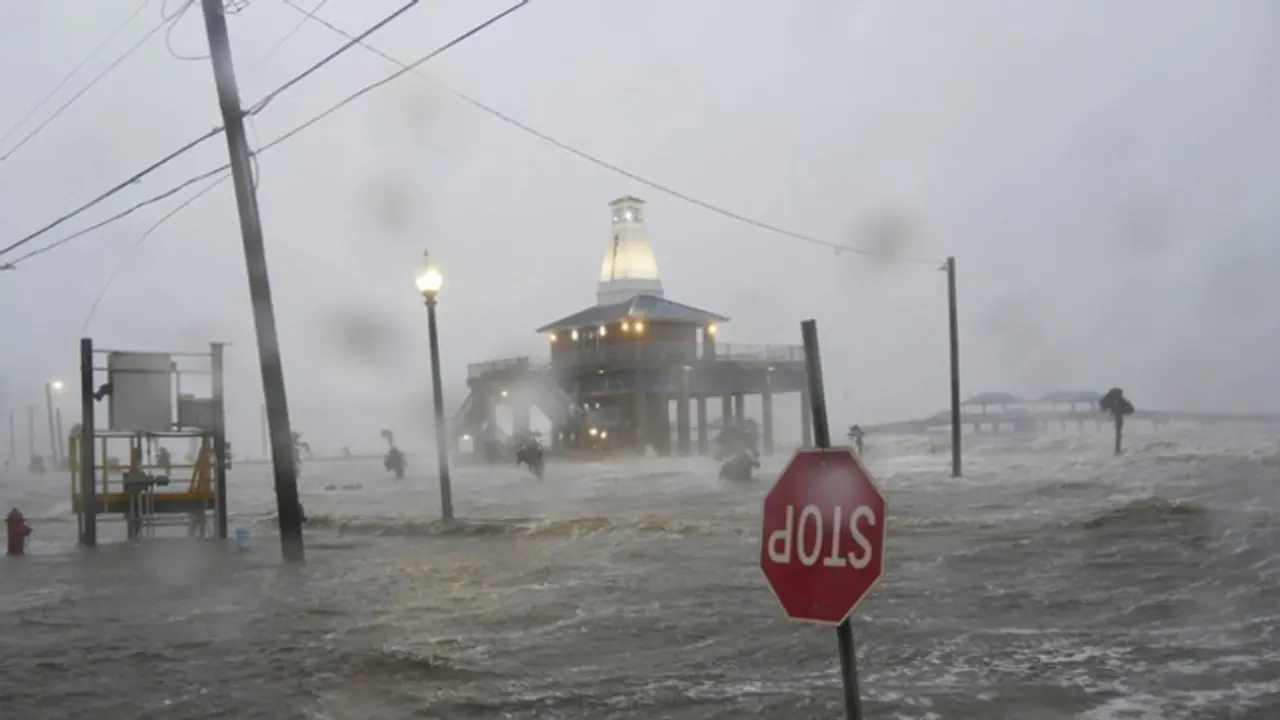Hurricane Francine has left hundreds of thousands without power and caused widespread flooding after hitting the coast of Louisiana before driving inland.
In a devastating turn of events, Hurricane Francine, a ferocious Category 2 tempest, unleashed its fury on Louisiana on Wednesday evening, leaving a trail of destruction and flooding along the Gulf Coast. The storm roared ashore in Terrebonne Parish, just southwest of Morgan City, with winds howling at nearly 100 mph.

As Francine’s eye made landfall at 5 pm CT, it propelled hurricane-force winds deep into southern Louisiana, veering toward Baton Rouge. The impact was nothing short of catastrophic. Morgan City Fire Chief Alvin Cockerham reported extensive damage, including inundated streets, downed power lines, and shattered tree limbs. “It’s a little bit worse than what I expected, to be honest with you,” Cockerham admitted. “It’s too dangerous to be out there in this.”
The National Hurricane Center (NHC) anticipates that Francine will pivot northward, traversing southeastern Louisiana and southwestern and central Mississippi on Thursday. As the storm advances inland, its far-reaching effects could extend hundreds of miles beyond the eye of the storm, escalating the risk of tornadoes and severe thunderstorms. These perilous conditions are expected to persist into Friday morning.
Francine, the sixth named storm of the Atlantic hurricane season, rapidly intensified before making landfall. The NHC has issued stern advisories, urging residents to stay indoors as the storm moves inland.
Francine is predicted to skirt near New Orleans and diminish in intensity as it progresses northeast through Mississippi, yet it will continue to bring torrential rains and potential flash flooding. Senior hurricane specialist Brad Reinhart cautioned that some areas might experience up to 12 inches of rain.
In response to the unfolding crisis, Louisiana Governor Jeff Landry announced that the National Guard would deploy essential resources, including food, water, vehicles, boats, and helicopters, to support search and rescue operations.
President Joe Biden has granted an emergency declaration for Louisiana, with both Louisiana and Mississippi governors declaring states of emergency. In Mississippi, the Emergency Management Agency has distributed over 100,000 sandbags to the southern regions, and several schools have closed in anticipation of the storm’s impact.
Governor Landry emphasized the gravity of the situation, stating, "After declaring a state of emergency, we have now determined that this storm is of such severity that an effective response is beyond the capabilities of the state and local governments. This federal assistance is needed to save lives and property."
The storm has also disrupted air travel, with airlines canceling flights into and out of Louis Armstrong New Orleans International Airport through Thursday morning. Coastal communities are grappling with high waves, flooding, and widespread power outages, particularly in southeast Louisiana and surrounding parishes.
Laura Leftwich, who sought refuge at her mother’s home, witnessed the wind sweeping away birdhouses and shared harrowing video footage of street flooding with friends. “It’s a little scary,” she remarked. Meanwhile, resident Luis Morfin, who had taken shelter at a friend’s home, noted, “We knew what we were expecting.”
Hurricane Francine marks the third hurricane to strike the continental U.S. this year, following Hurricane Beryl, which made landfall in Matagorda, Texas, on July 8 as a Category 1 storm, and Hurricane Debby, which hit near Steinhatchee, Florida, on August 5, also as a Category 1 storm.
As the storm bands continued to move in from the Gulf of Mexico, a Tornado Watch was issued for much of Louisiana and southern Mississippi through Wednesday evening.
